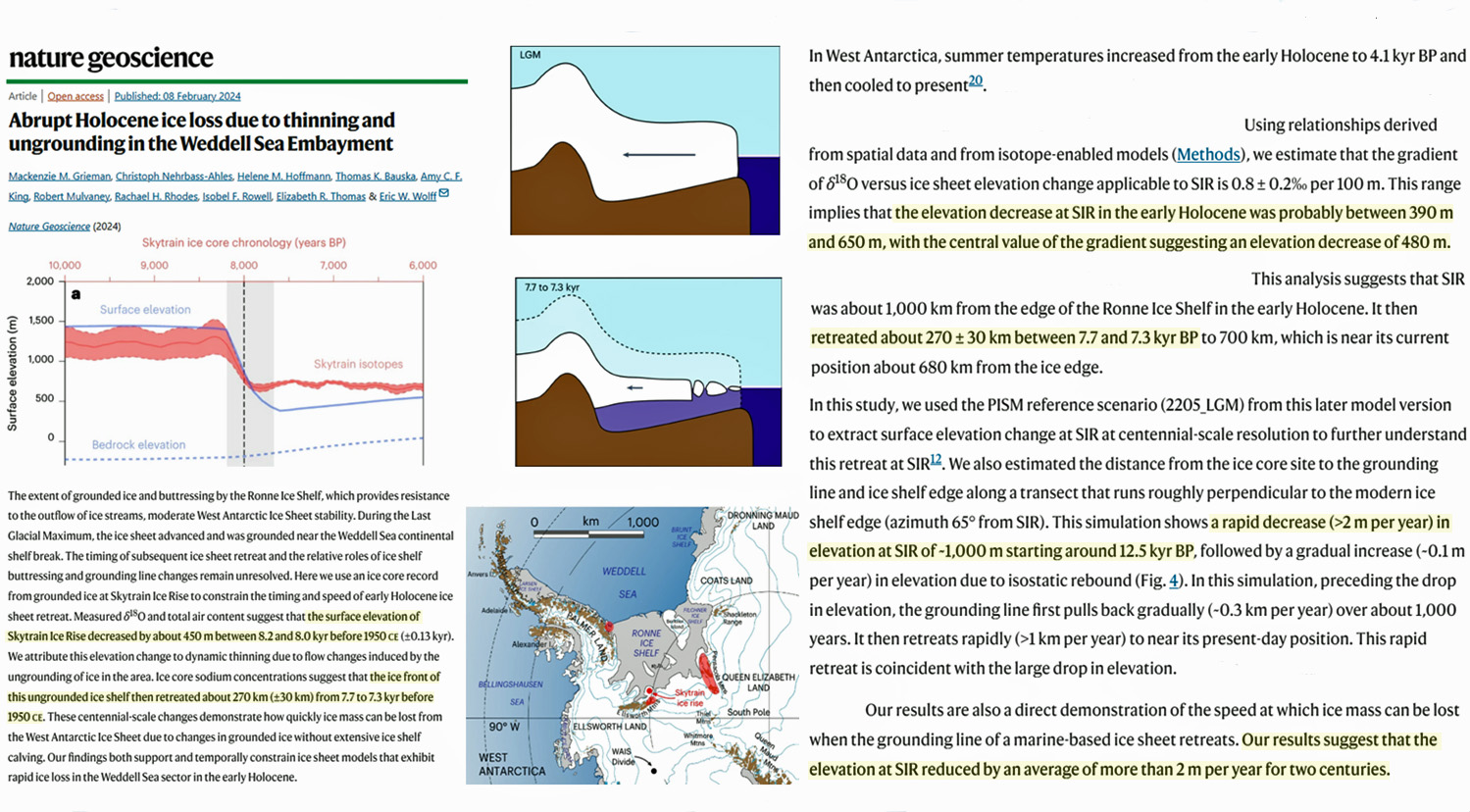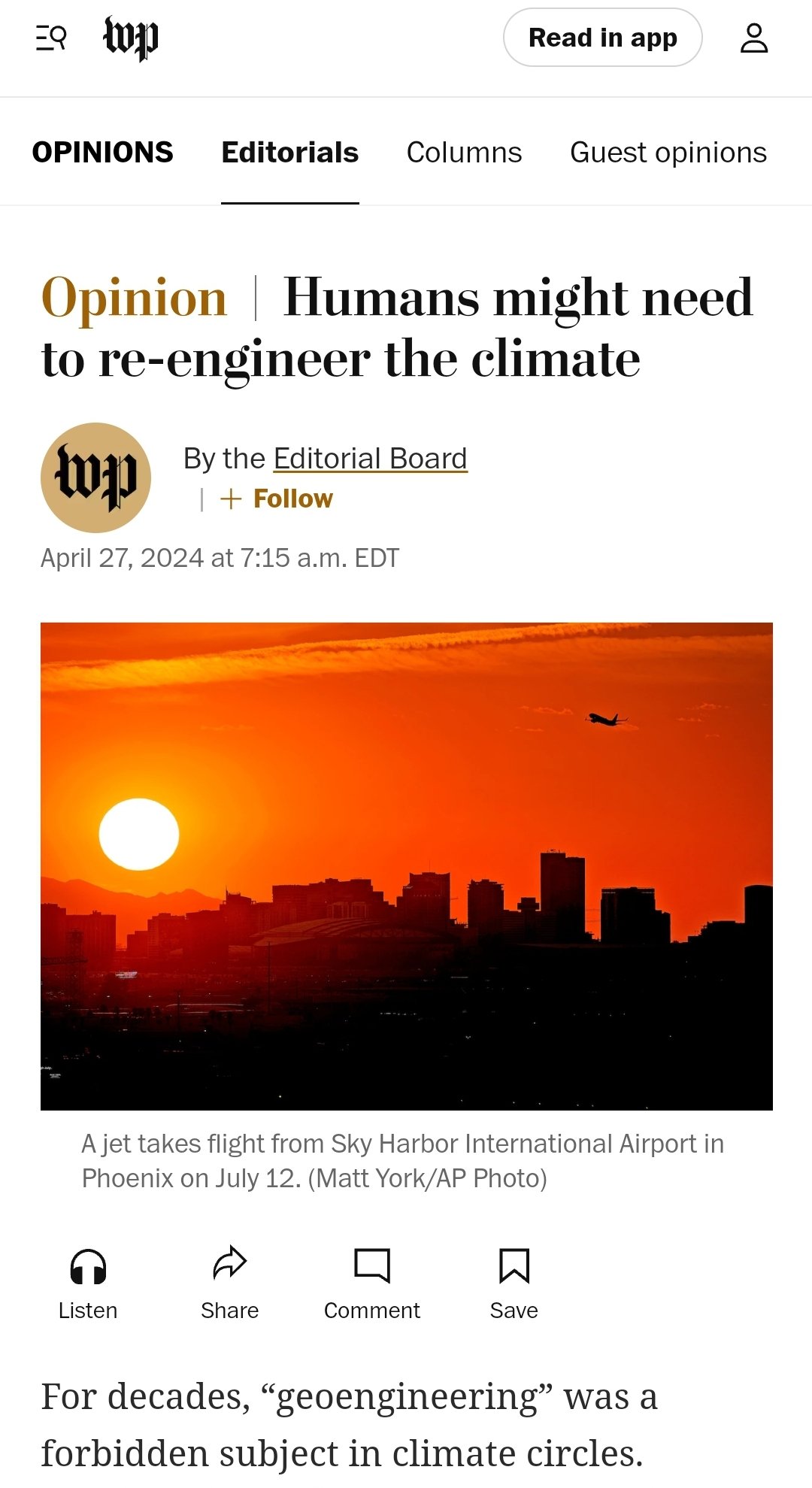The Elevation Of The Early Holocene’s W. Antarctic Ice Sheet Once Plunged 480 Meters In 200 Years
By Kenneth Richard on 26. February 2024
Retreat rates for the West Antarctic Ice Sheet (WAIS) were massive during the Early Holocene, when CO2 concentrations were low and stable (~265 ppm), dwarfing any retreat rates witnessed in the modern era.
New research published in Nature Geoscience (Grieman et al., 2024) assesses the elevation of West Antarctica’s ice sheet fell by ~480 m within just 200 years from about 8,000 to 8,200 years ago, a drop of more than 2 meters per year.
The scientists also document an ice area retreat of 270 kilometers at the study site within only 400 years, from ~7,300-7,700 years ago. That’s an area retreat rate of about 675 meters per year.
No modern WAIS recession rates are even remotely comparable to those achieved naturally during the Early to Mid Holocene.
In fact, recent research (Zhang et al., 2023) indicates West Antarctica’s mean annual surface temperatures cooled by more than -1.8°C (-0.93°C per decade) from 1999-2018., which would preclude a recession of the WAIS linked to a surface warming trend.





